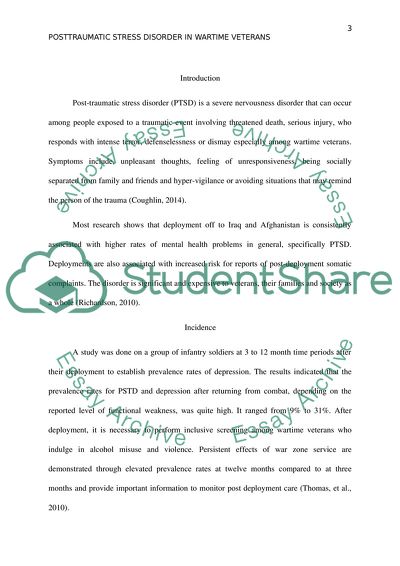Cite this document
(Posttraumatic Stress Disorder in Wartime Veterans Coursework Example | Topics and Well Written Essays - 3000 words, n.d.)
Posttraumatic Stress Disorder in Wartime Veterans Coursework Example | Topics and Well Written Essays - 3000 words. https://studentshare.org/psychology/1822687-ptsd-and-wartime-veterans
Posttraumatic Stress Disorder in Wartime Veterans Coursework Example | Topics and Well Written Essays - 3000 words. https://studentshare.org/psychology/1822687-ptsd-and-wartime-veterans
(Posttraumatic Stress Disorder in Wartime Veterans Coursework Example | Topics and Well Written Essays - 3000 Words)
Posttraumatic Stress Disorder in Wartime Veterans Coursework Example | Topics and Well Written Essays - 3000 Words. https://studentshare.org/psychology/1822687-ptsd-and-wartime-veterans.
Posttraumatic Stress Disorder in Wartime Veterans Coursework Example | Topics and Well Written Essays - 3000 Words. https://studentshare.org/psychology/1822687-ptsd-and-wartime-veterans.
“Posttraumatic Stress Disorder in Wartime Veterans Coursework Example | Topics and Well Written Essays - 3000 Words”. https://studentshare.org/psychology/1822687-ptsd-and-wartime-veterans.


